SAMURAI BUILD 2F,
1-29 Katori-cho, Nakamura-ku,
Nagoya, Aichi Prefecture, Japan
Tsumami-Zaiku Experience

Hello, Everyone!
On July 20th, we held our third Tsumami-Zaiku experience workshop and it was a truly fulfilling time!
Do you know what “Tsumami-Zaiku” is ?

It’s the technique used in the hairpins worn by Maiko, apprentice geishas.
“Tsumami-Zaiku” is one of Japan’s traditional crafts, originating in Kyoto and later flourishing in Tokyo.
It has a history of over 200 years and was once enjoyed as a hobby by women.
Gradually, it became more widespread, and today, you can even find specialized books on it in bookstores.
The best part? You don’t need needles, thread, or a sewing machine.
All you need is glue and tweezers!
Recently, the craft has seen a revival in popularity, and you can even find materials for it at 100-yen shops, making it more accessible.
In our past workshop, we’ve made “Santa Claus” and “Tsukimi” (Moon Viewing) designs.
This time, we’re going to create a summer classic: “Morning Glories“! 🌸🌿
What kind of morning glory creation will bloom?
Let’s start making original Tsumami-Zaiku creations!
Do you know there are two types of fabric-folding techniques: “Maru-tsumami” (round fold) and “Ken-tsumami” (pointed fold)?
This time, we’ll be making two morning glory flowers using the “Maru-tsumami” technique.
First, choose favorite colors for the petals and the base paper, then attach the base paper to the frame. Once that’s done, you’re all set!
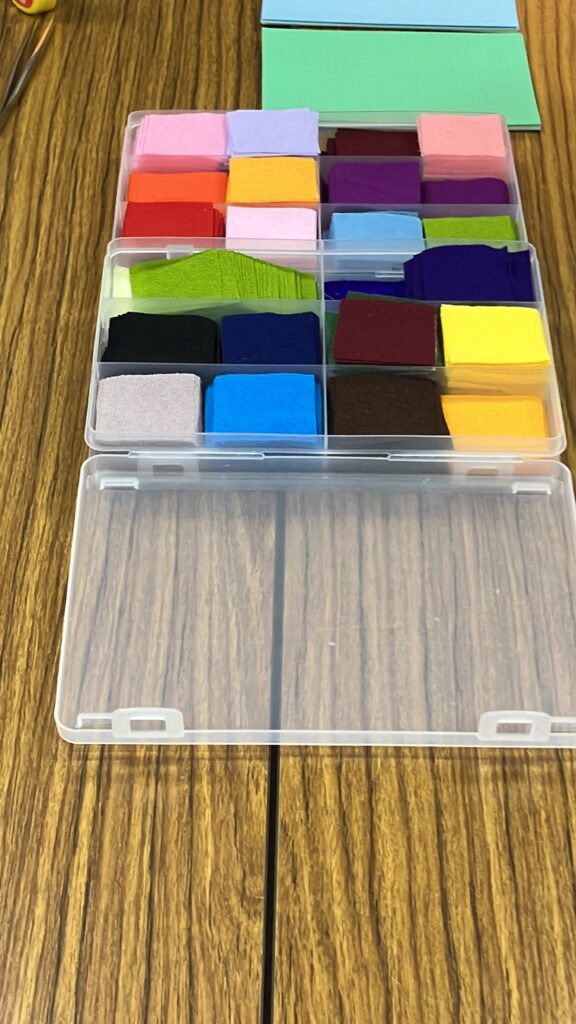
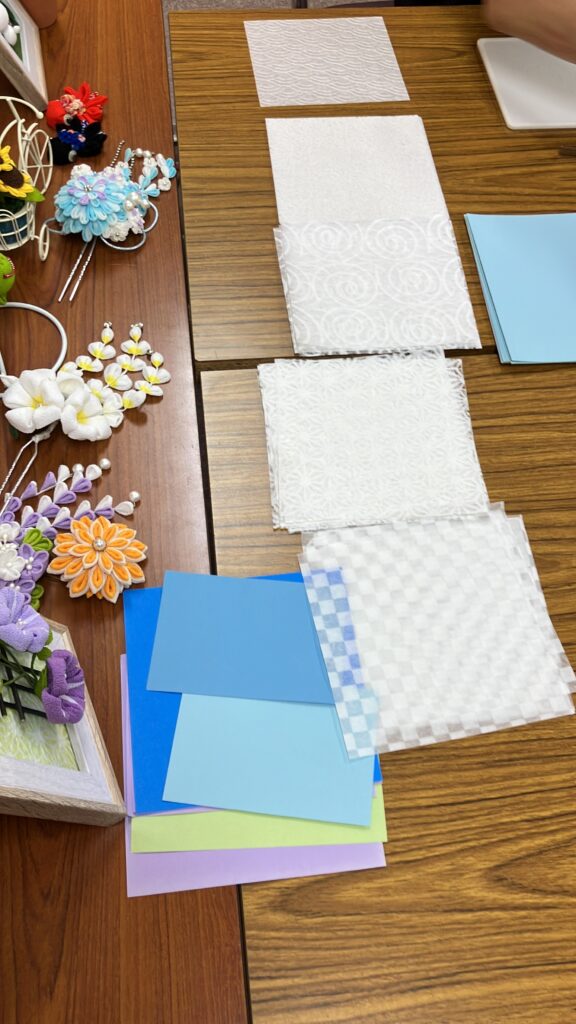

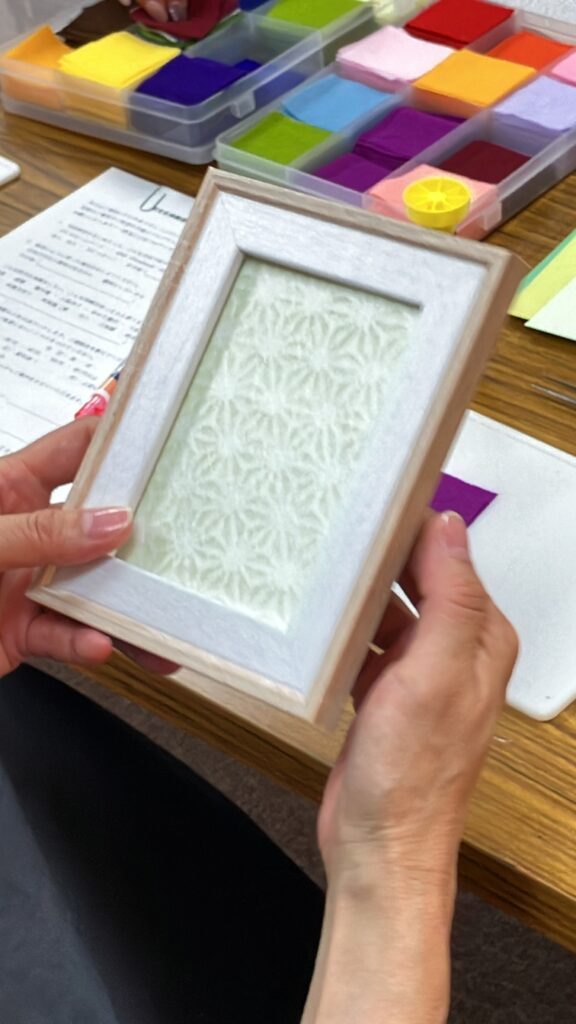
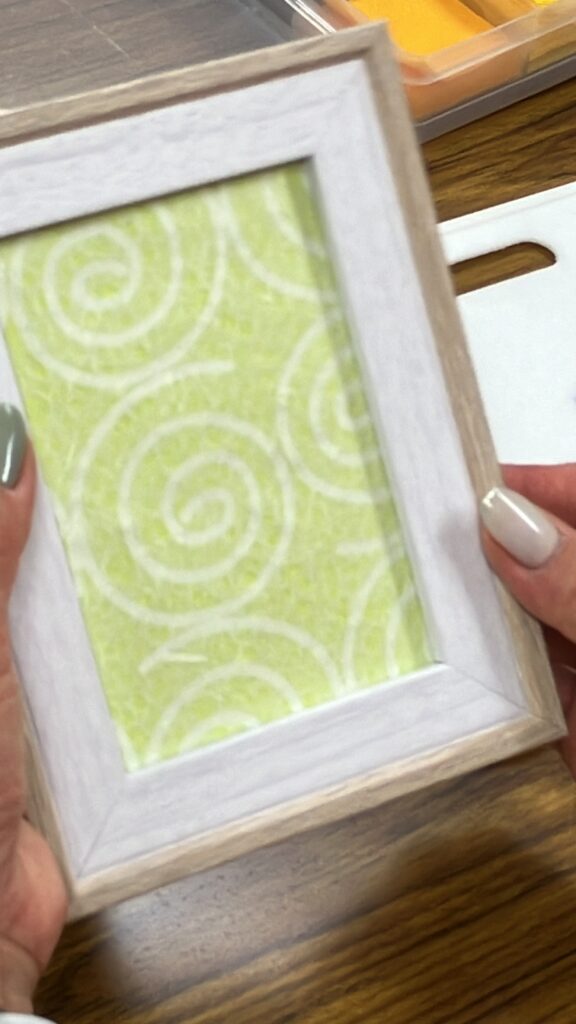
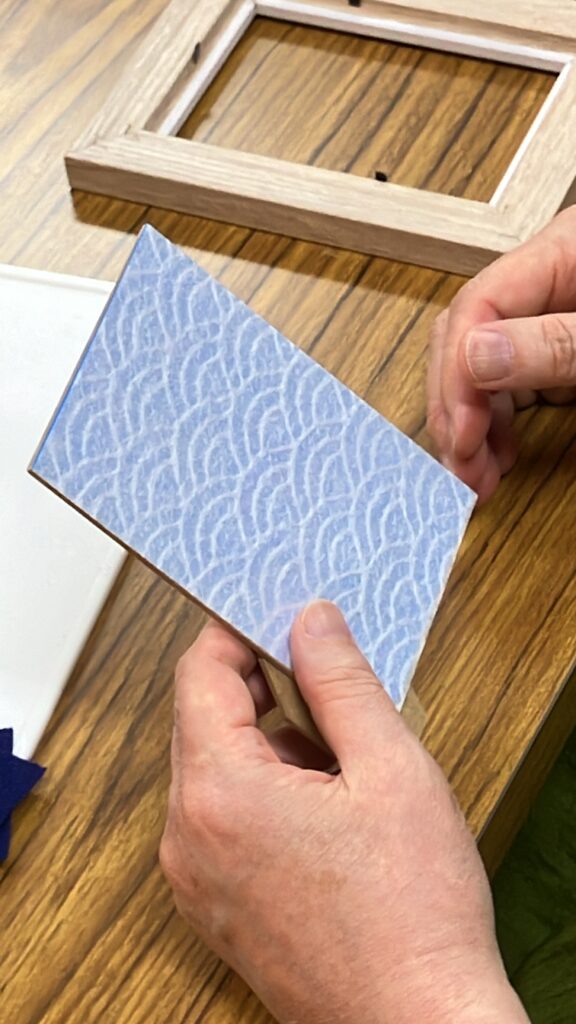
May everyone’s unique and beautiful morning glories bloom! 🌸
Let’s Create Morning Glory Petals Using the Maru-Tsumami Technique
Fold the fabric in half, then glue along the edges to seal it. This will create a rounded, plump Maru-tsumami (round fold).
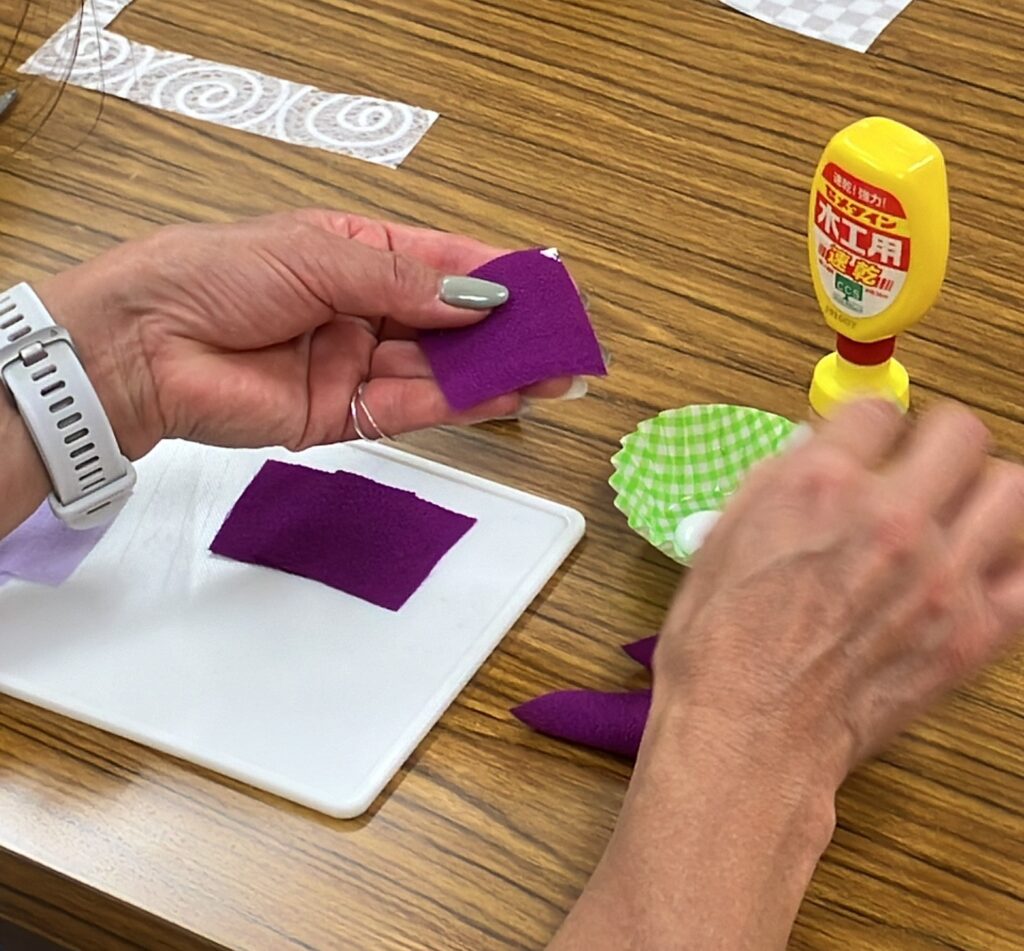
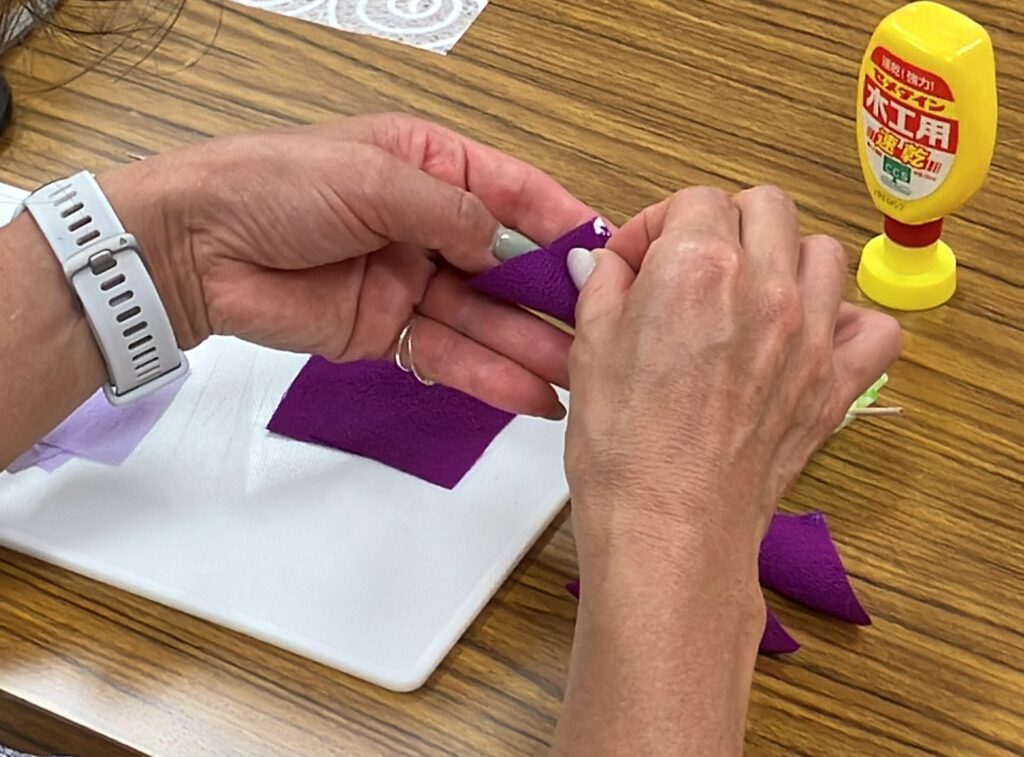
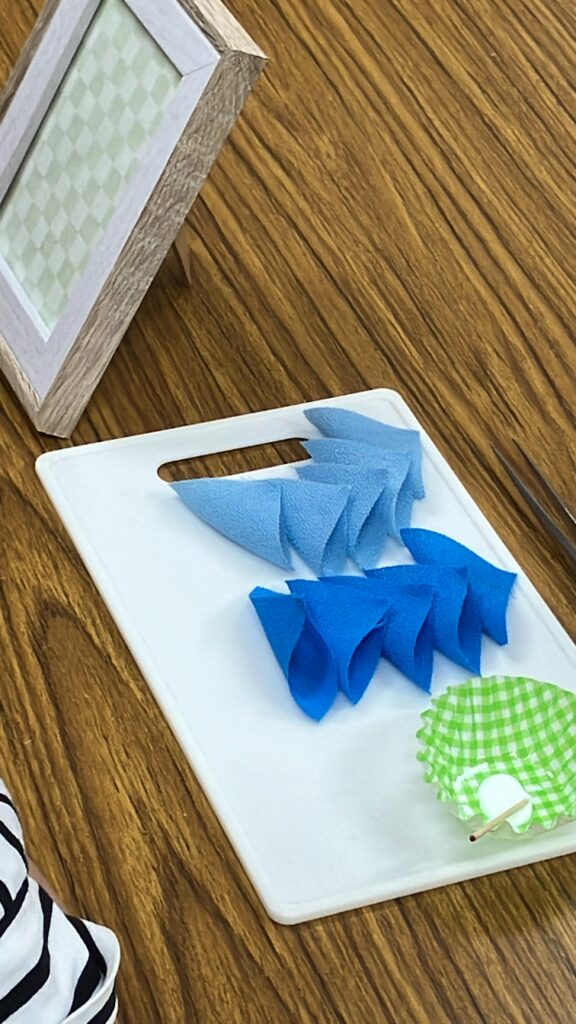
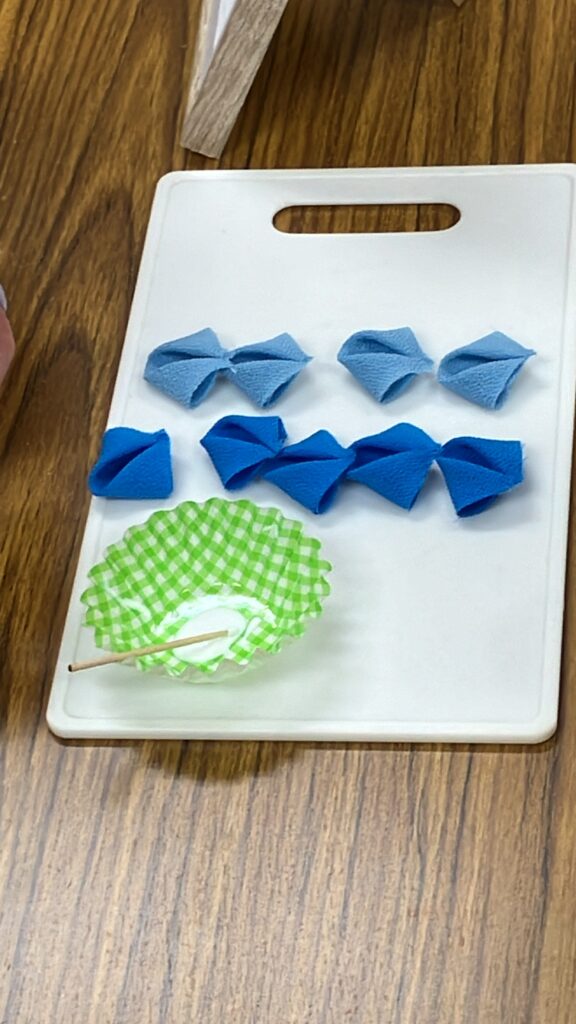
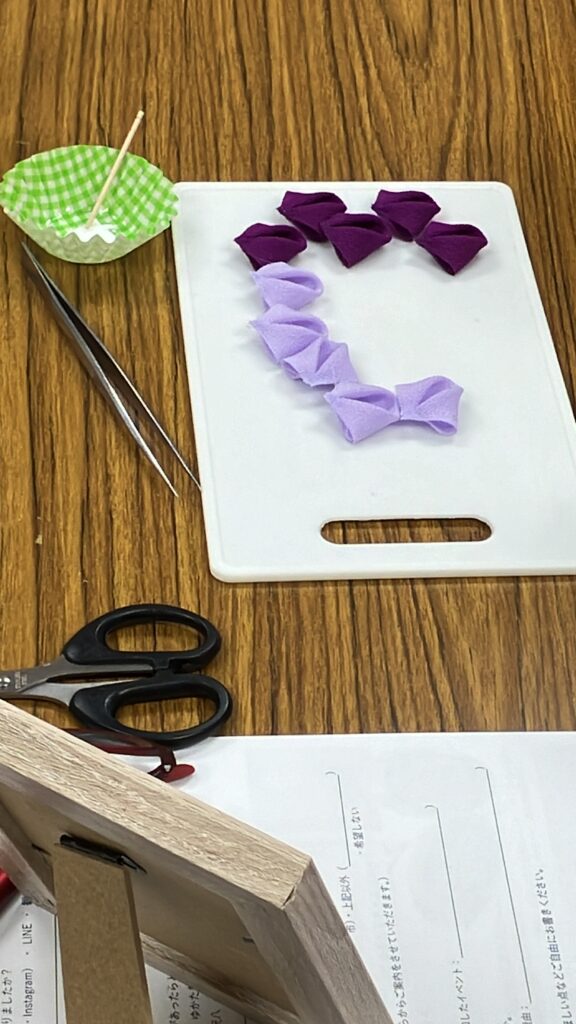
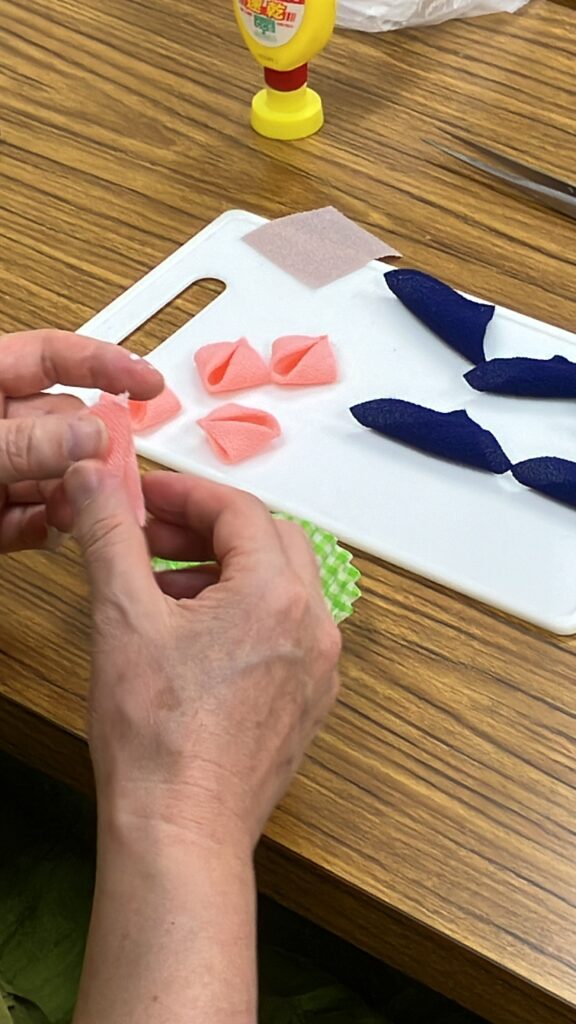
Let’s finish the morning glory petal!
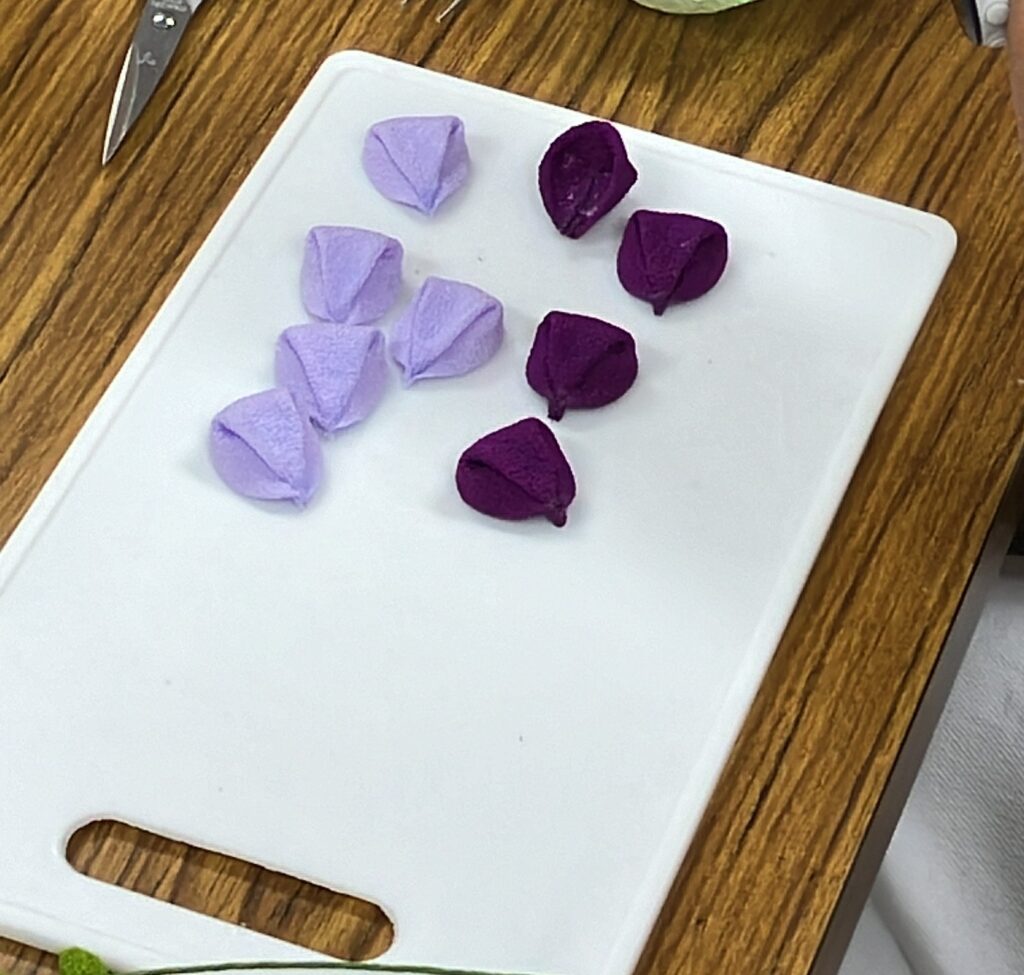
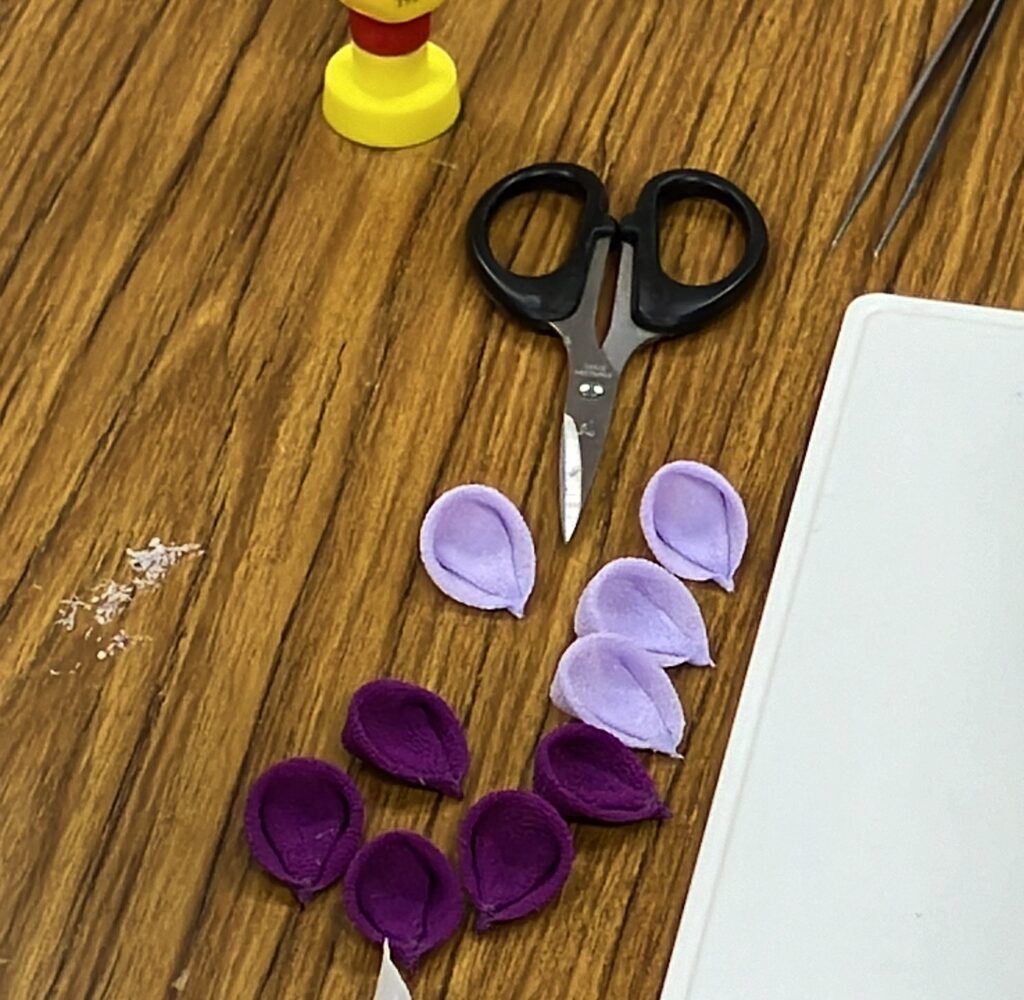
Turn the round fold inside out and gently puff it up as you shape the petals.
It turned into a cute, round shape!
It was fun imagining what kind of morning glory shape it would become as I worked on it!
Next, attach the petals to the part modeled after the calyx.
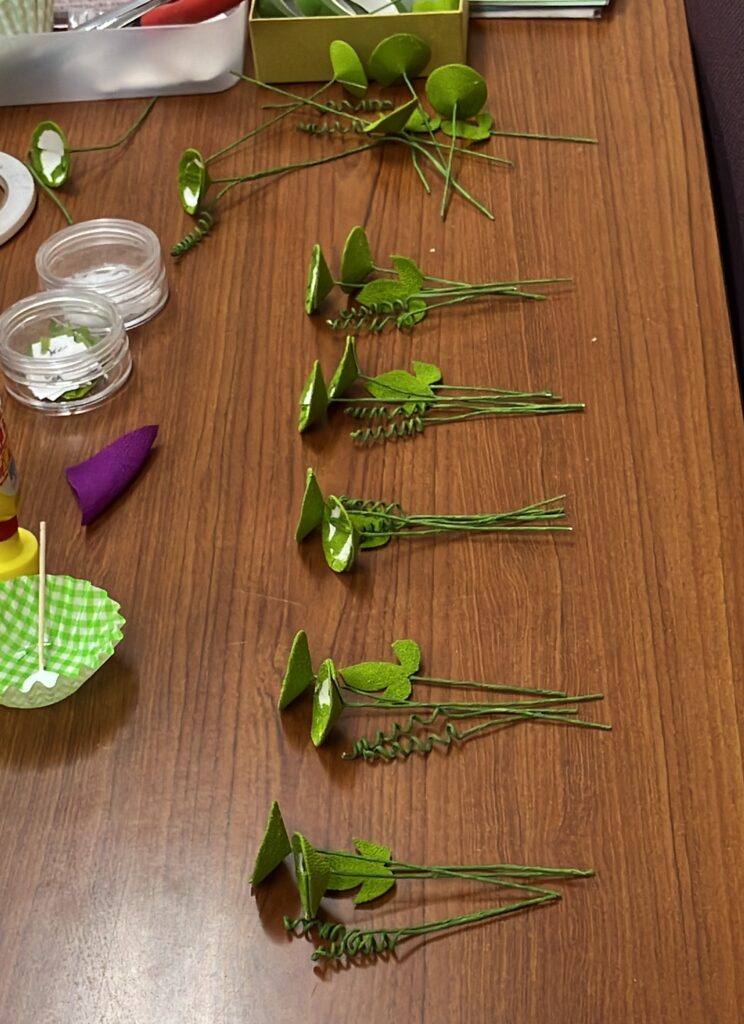
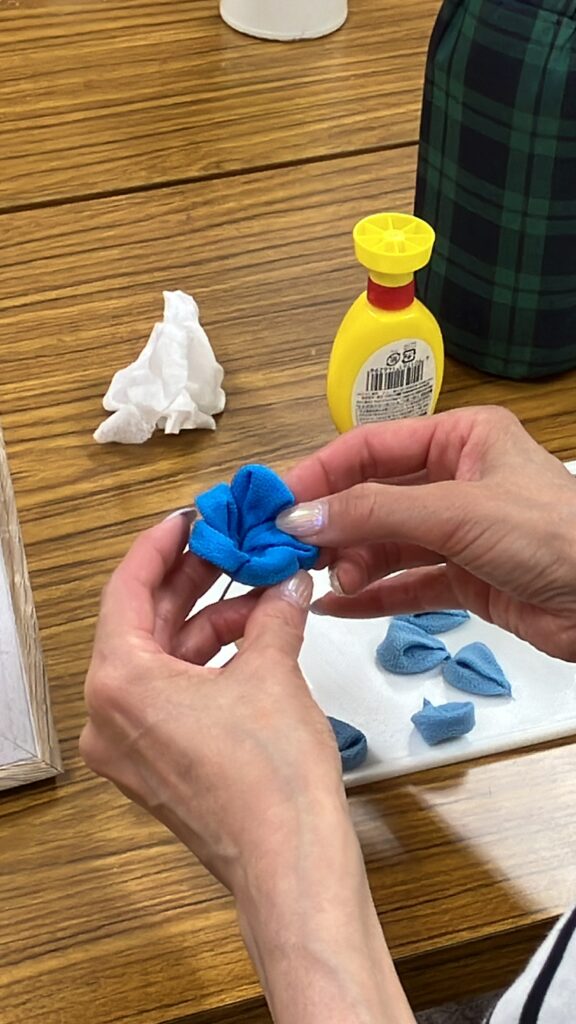
Then, apply glue in a single line down the center of the petal to create the pattern (vein).
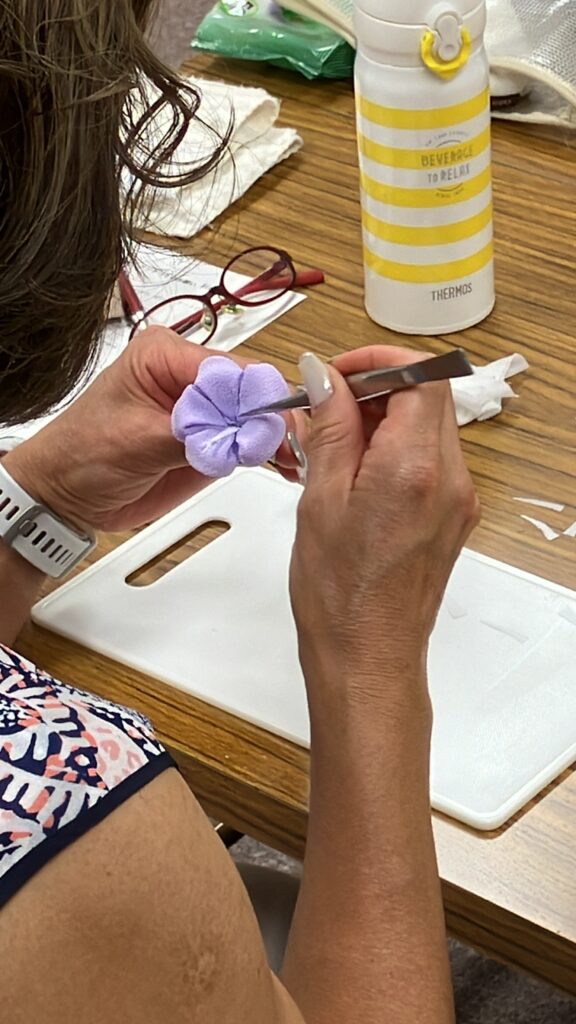
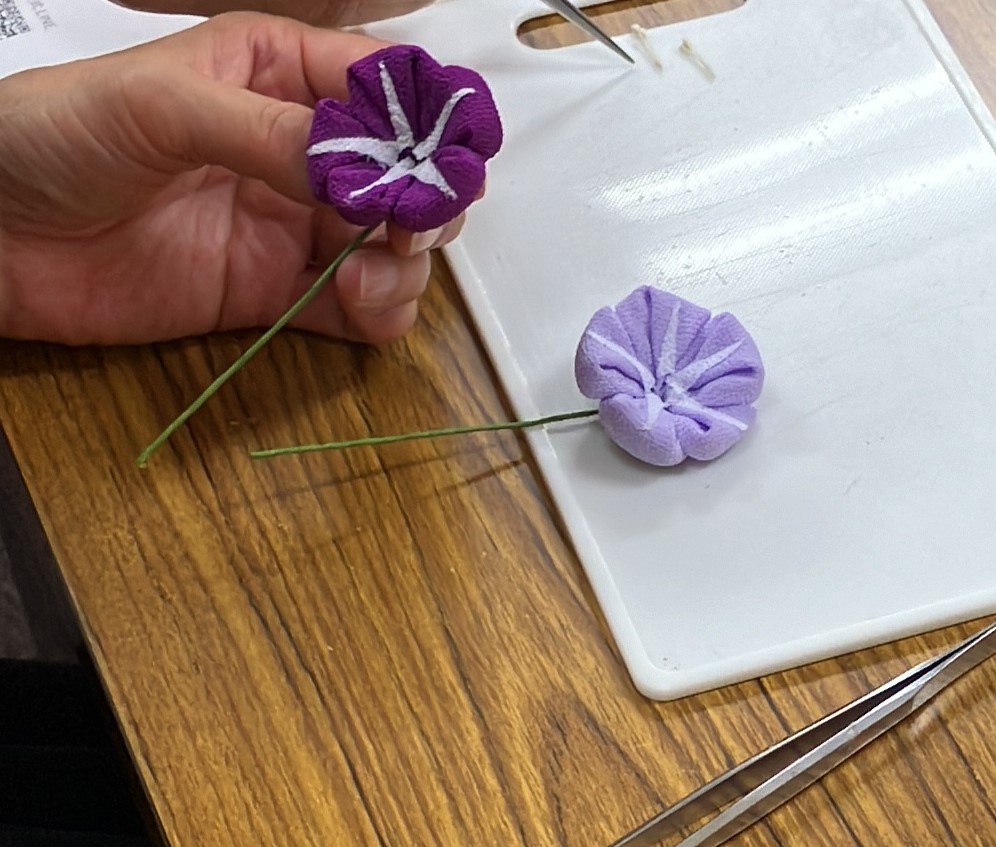
This makes it look more like a real morning glory and enhances its beauty!
Next, apply glue to the center and attach the stamen.
This is a delicate step, so it can be a bit nerve-wracking, but it really brings the morning glory to life!
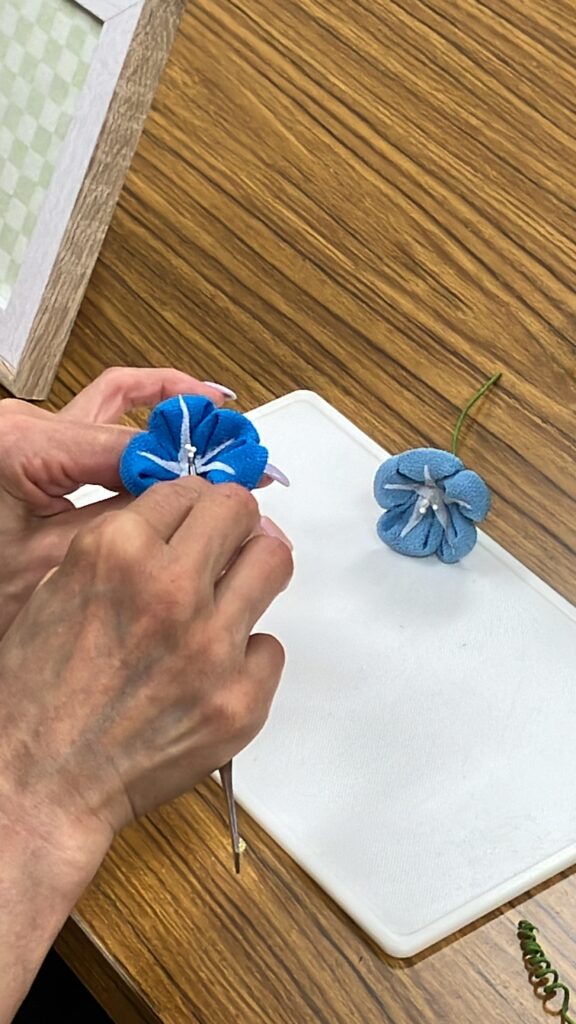
Gradually, the morning glories have started to take shape!
Consider the balance between the morning glory, buds, and leaves as you arrange them. Experiment with different combinations, then wrap everything together with floral tape.
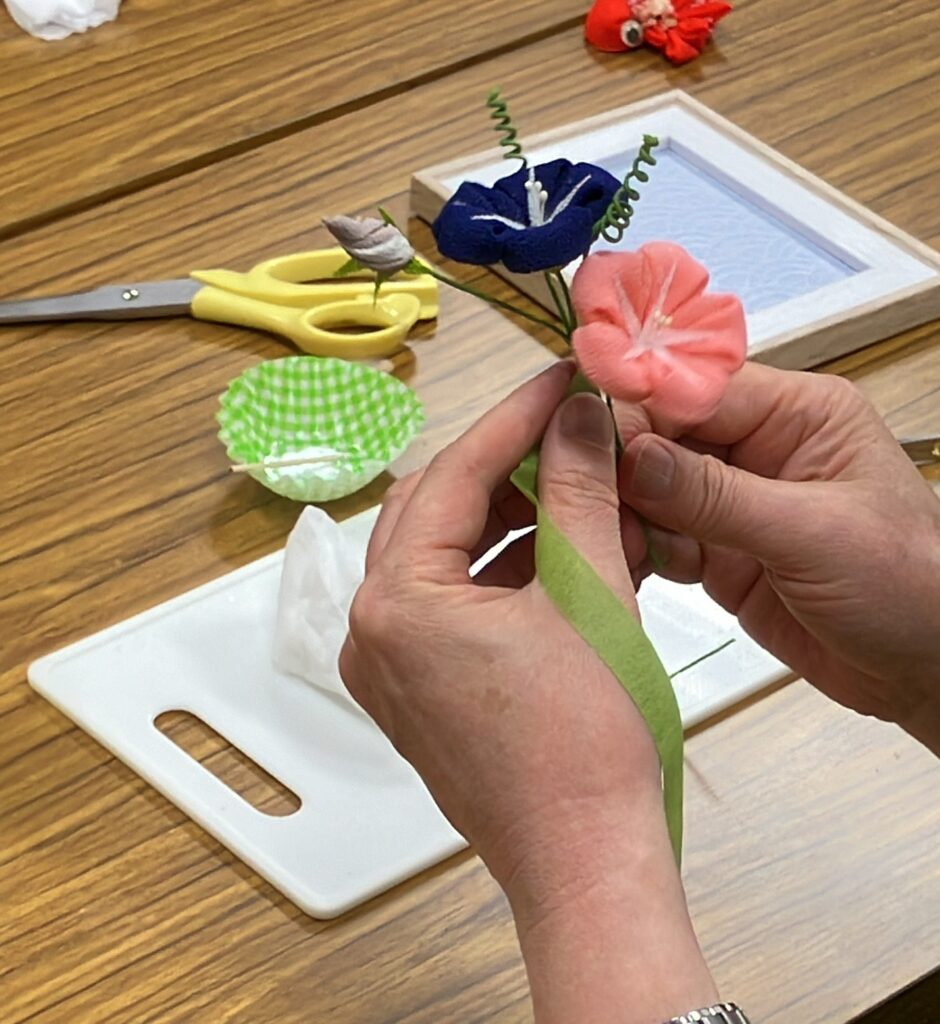
Let’s proceed to the final touch!
Adjust the balance to make it look beautiful as you attach the morning glory to the backing.
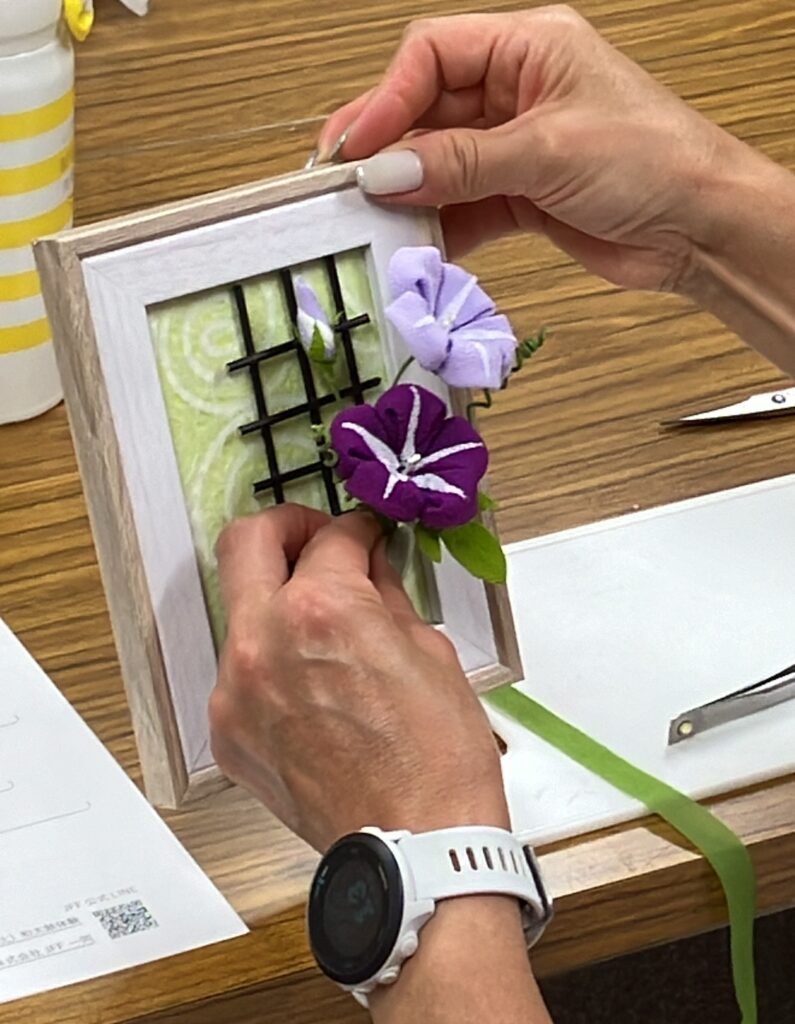
Completed!
Take a look at everyone’s creations!
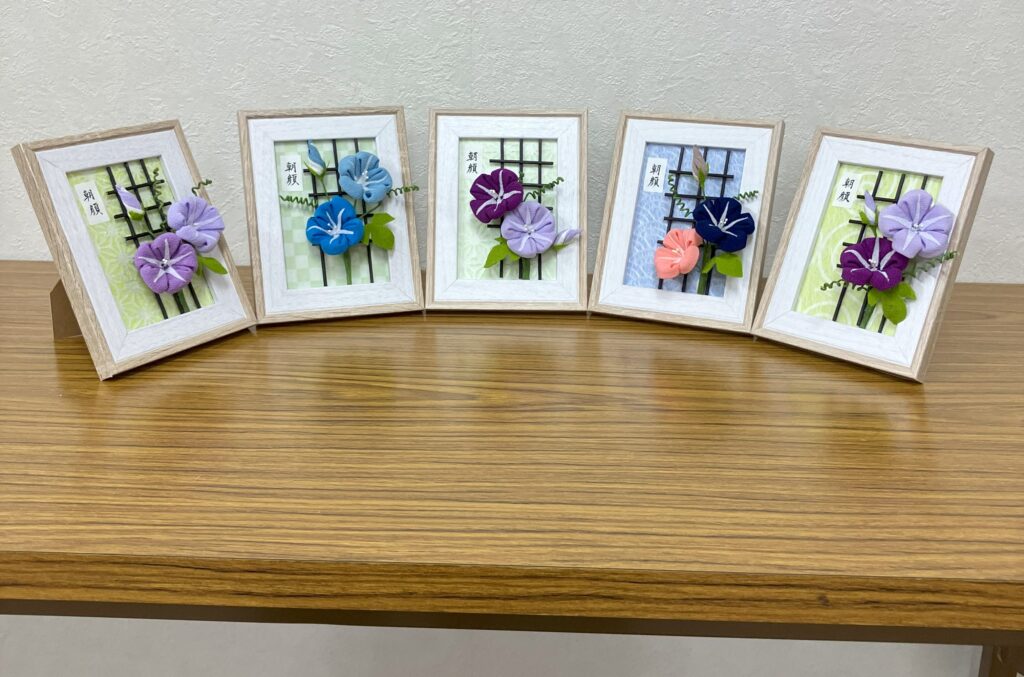
Many colorful morning glories have bloomed, each one slightly different, showing off their unique personalities. Each one turned out to be beautiful!
Here is a part of the teacher’s work.

There are various creations like sunflowers, Chinese lantern plants, goldfish, all in tune with the summer season.
Once you master the basic techniques, one of the great appeals of Tsumami-Zaiku is the ability to create a variety of seasonal expressions.
The fabric used is called “chirimen.” By changing the colors or combining round and pointed folds, you can create a variety of other pieces. You might start by using purchased materials, or try making them with fabric from old clothes or handkerchiefs you no longer wear.
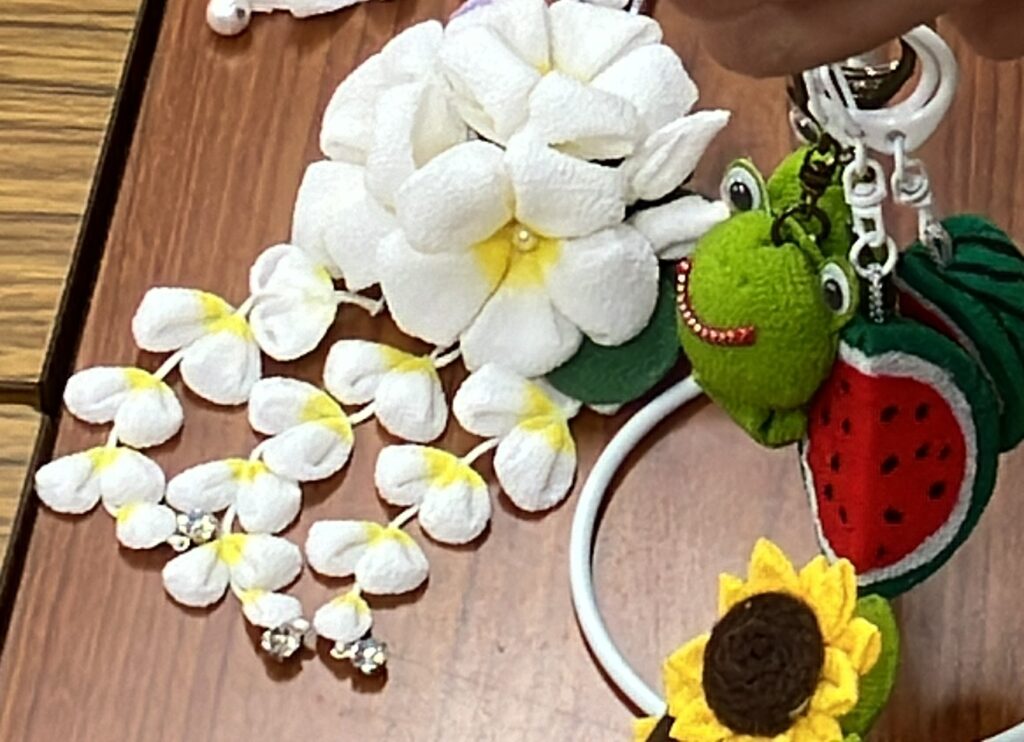
Actually, Tsumami-zaiku is more common than you might think!
It’s not just used for kanzashi hairpins or combs, but also for everyday items like small accessories and home decor, making it an easy and accessible part of Japanese culture.
It’s also an excellent gift or souvenir for foreigners.
Be sure to explore, touch, and try creating your own original pieces!
Today’s instructor
Ms. Aya Takeuchi, came from Toyota City. She studied Tsumami -Zaiku on her own and now holds workshops at kindergartens, care facilities, and various locations. We were able to spend a very valuable time together.
Thank you so much!

And thank you to everyone for your hard work!







